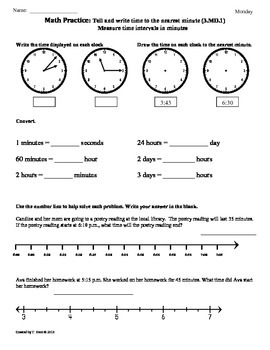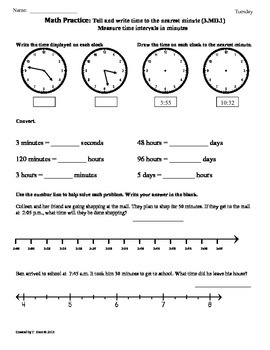- PDF
Description
You are purchasing Common Core math practice sheets aligned to assessment tasks. There is a practice sheet for every day of the week and a test for Friday.
The attachment consists of 10 worksheets designed to reinforce math skills. There are two sheets for each day that can be copied front and back to save paper. The front sheet focuses on the weekly target skill and the back side of the sheet is a review of previously taught skills.
This particular set of sheets focuses on:
3.MD.1 Telling Time to the Minute & Elapsed Time
The back side of the paper is a REVIEW of the following skills:
3.OA.9 arithmetic patterns
3.OA.5 division
3.NF.1
The last two sheets in the set are designed to be an assessment and are aligned to the other practice sheets in the set.





